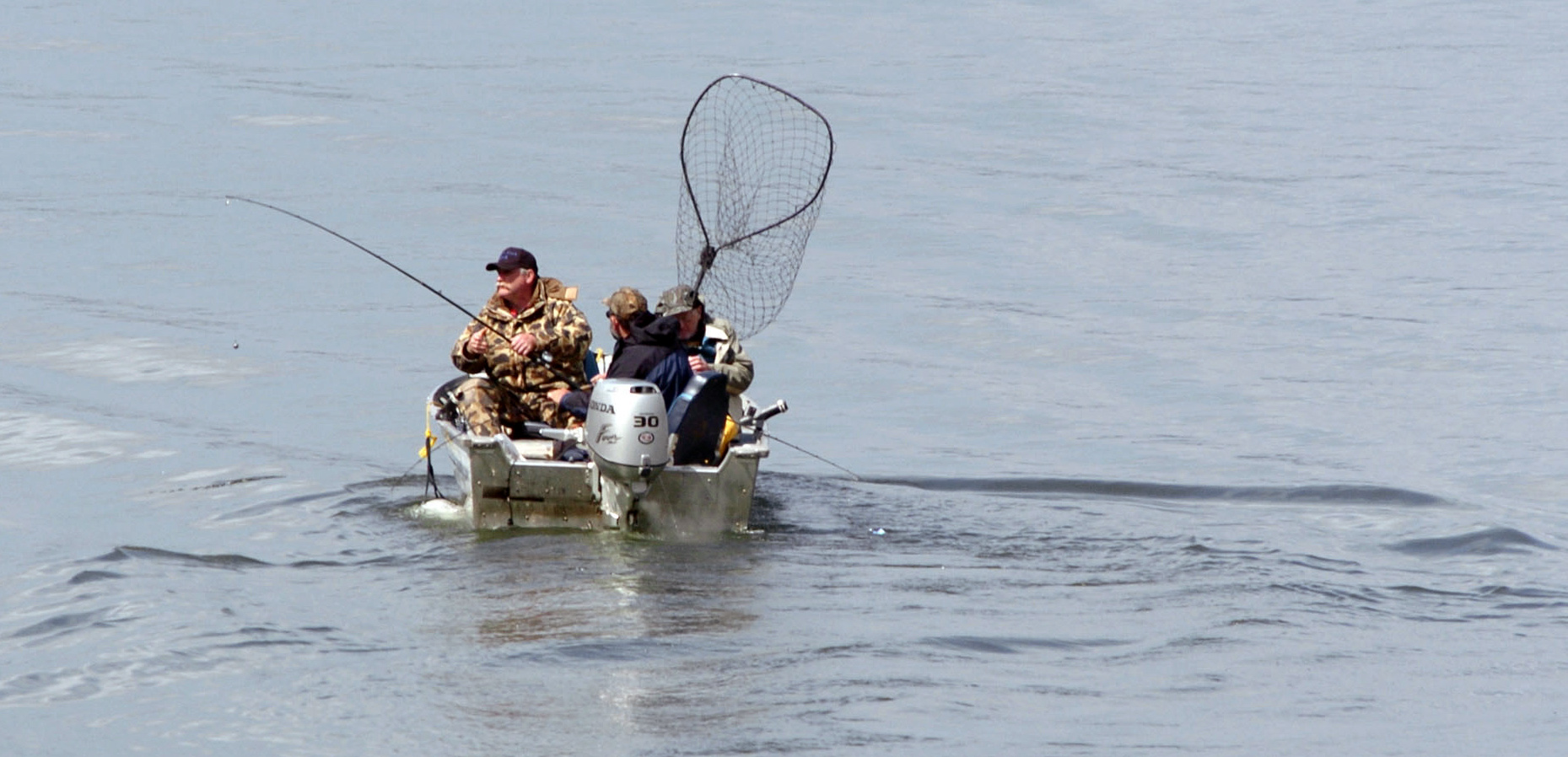A spring chinook run of 141,400 — the poorest in six years — is forecast to enter the Columbia River destined for upstream of Bonneville Dam.
“This is awful,” said Larry Snyder, president of the Vancouver Wildlife League and an avid spring chinook angler. “I don’t see a very long season this year.”
The forecast for Oregon’s Willamette River is 59,845 spring chinook, down slightly from a run of 65,100 in 2012.
Upriver spring chinook are the finest salmon in the Columbia River. They fuel a sport-fishing frenzy that ramps up in early March and continues until the allocation is caught, normally in early to mid-April.
Spring chinook also are prized by commercial fishermen, fetching the gillnet fleet their best prices of the year.
State, federal and tribal biologists completed their upper Columbia forecast last week and Willamette prediction this week.
In 2012, the upper Columbia prediction was for 314,200, but the actual run was only 203,100.
This upper Columbia return would be the smallest since 86,000 came back in 2007.
Stuart Ellis, a biologist with the Columbia Inter-Tribal Fish Commission, said the forecast includes 115,000 4-year-olds and 25,700 5-year-olds. The older fish tend to return earlier.
The forecast is based on the 2012 return of 3-year-old “jack” upper Columbia spring chinook that to a variety of hatcheries and traps in the watershed upstream of Bonneville Dam.
At Bonneville Dam, the jack count was 10,337, the poorest since 2006.
Spring chinook are the most difficult of the major salmon stocks to forecast, with the runs often returning much smaller or larger than predicted.
The relationship between jacks and adults in recent years has differed from historic norms, causing state, federal and tribal biologists to use a variety of models to attempt a forecast.
This year, the upper Columbia models are mostly in agreement, ranging from a low of 100,000 4-year-olds to a high of 145,000 4-year-olds.
Until about early May, Washington and Oregon manage the upper Columbia spring chinook run with a 30 percent buffer to compensate for forecasting error and assure catch balancing with the four treaty tribes.
The buffer means the states will manage the run as if it will be no larger than 98,980 and the total catch (plus release mortalities) in the combined sport and gillnet fisheries can be no larger than 7,325, Ellis said.
The Willamette forecast is for 30,550 4-year-olds and 26,665 5-year-olds, said John North of the Oregon Department of Fish and Wildlife.
“If we get good weather and 4 or 5 feet of water visibility we’ll be finished by early April,” Snyder said. “Maybe the new requirement for barbless hooks and high water conditions will extend the season a bit.”
Snyder said he thought the improvements in streamflows for fish at the Columbia River dams in recent years would result in more stable returns of spring chinook.
“With the fish flush, I thought we’d get sustainable numbers,” he said. “I guess this shows the ocean in more important that what we can do inland. I’m devastated. I expected a good season.”
In 2012, sport fishing downstream of Bonneville Dam was open through April 22, plus May 26-27, with a total of 13,300 adult spring chinook kept and 2,400 adults released.
Obviously, catch allocations in 2013 will be significantly less.
Washington and Oregon officials will meet at 10 a.m. Jan. 30 at the Sheraton Portland Airport Hotel, 8235 N.E. Airport Way, to set the 2013 sport-fishing season for the lower Columbia.
Cowlitz-Kalama-Lewis — Weak spring chinook runs are predicted for the three Southwest Washington tributaries.
The forecast is 1,600 spring chinook back to the Lewis River, down from 1,800 in 2012.
For the Kalama, 700 spring salmon are predicted. The return in 2012 was 600.
The Cowlitz is anticipated to get 5,500 spring chinook. This year’s return was 9,200.
Fishing restrictions are expected in the Kalama River and possible in the Lewis.
Summer chinook — The Columbia River forecast is 73,500. That compares with a forecast in 2012 of 91,200 and an actual return of 58,300. Summer chinook return in mid-June and July.




